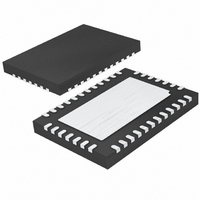LTC3586EUFE#PBF Linear Technology, LTC3586EUFE#PBF Datasheet - Page 21

LTC3586EUFE#PBF
Manufacturer Part Number
LTC3586EUFE#PBF
Description
IC MANAGER USB PWR HI-EFF 38QFN
Manufacturer
Linear Technology
Datasheet
1.LTC3586EUFEPBF.pdf
(36 pages)
Specifications of LTC3586EUFE#PBF
Applications
Handheld/Mobile Devices
Voltage - Supply
4.35 V ~ 5.5 V
Operating Temperature
-40°C ~ 85°C
Mounting Type
Surface Mount
Package / Case
38-QFN
Lead Free Status / RoHS Status
Lead free / RoHS Compliant
Current - Supply
-
Available stocks
Company
Part Number
Manufacturer
Quantity
Price
operaTion
and the input capacitance of the FBx pin and also helps
to improve transient response for output voltages much
greater than 0.8V. A variety of capacitor sizes can be used
for C
plications. Experimentation with capacitor sizes between
2pF and 22pF may yield improved transient response.
Buck Regulator Operating Modes
The LTC3586/LTC3586-1’s buck regulators include two
possible operating modes to meet the noise/ power needs
of a variety of applications.
In pulse-skip mode, an internal latch is set at the start of
every cycle which turns on the main P-channel MOSFET
switch. During each cycle, a current comparator compares
the peak inductor current to the output of an error amplifier.
The output of the current comparator resets the internal
latch which causes the main P-channel MOSFET switch to
turn off and the N-channel MOSFET synchronous rectifier
to turn on. The N-channel MOSFET synchronous rectifier
turns off at the end of the 2.25MHz cycle or if the current
through the N-channel MOSFET synchronous rectifier
drops to zero. Using this method of operation, the error
amplifier adjusts the peak inductor current to deliver the
required output power. All necessary compensation is
internal to the switching regulator requiring only a single
ceramic output capacitor for stability. At light loads, the
inductor current may reach zero on each pulse which will
turn off the N-channel MOSFET synchronous rectifier.
In this case, the switch node (SW1, SW2) goes high
impedance and the switch node voltage will “ring”. This
is discontinuous mode operation, and is normal behavior
for a switching regulator. At very light loads, the buck
regulators will automatically skip pulses as needed to
maintain output regulation.
FB
but a value of 10pF is recommended for most ap-
Figure 5. Buck Converter Application Circuit
LTC3586-1
LTC3586/
V
INx
SWx
GND
FBx
L
C
FB
R1
R2
3586 F05
C
X = 1, 2
OUT
V
OUTx
At high duty cycles (V
inductor current to reverse, causing the buck regulator
to operate continuously at light loads. This is normal and
regulation is maintained, but the supply current will increase
to several milliamperes due to continuous switching.
In Burst Mode operation, the buck regulator automati-
cally switches between fixed frequency PWM operation
and hysteretic control as a function of the load current.
At light loads, the buck regulators operate in hysteretic
mode in which the output capacitor is charged to a volt-
age slightly higher than the regulation point. The buck
converter then goes into sleep mode, during which the
output capacitor provides the load current. In sleep mode,
most of the regulator’s circuitry is powered down, helping
conserve battery power. When the output voltage drops
below a predetermined value, the buck regulator circuitry
is powered on and the normal PWM operation resumes.
The duration for which the buck regulator operates in
sleep mode depends on the load current. The sleep time
decreases as the load current increases. Beyond a certain
load current point (about 1/4 rated output load current) the
step-down switching regulators will switch to a low noise
constant frequency PWM mode of operation, much the
same as pulse-skip operation at high loads. For applica-
tions that can tolerate some output ripple at low output
currents, Burst Mode operation provides better efficiency
than pulse skip at light loads while still providing the full
specified output current of the buck regulator.
The buck regulators allow mode transition on the fly,
providing seamless transition between modes even under
load. This allows the user to switch back and forth between
modes to reduce output ripple or increase low current
efficiency as needed.
Buck Regulator in Shutdown
The buck regulators are in shutdown when not enabled for
operation. In shutdown, all circuitry in the buck regulator
is disconnected from the buck regulator input supply
leaving only a few nanoamps of leakage current. The
buck regulator outputs are individually pulled to ground
through a 10k resistor on the switch pins (SW1 and SW2)
when in shutdown.
LTC3586/LTC3586-1
OUTx
> V
INx
/2) it is possible for the
3586fb













